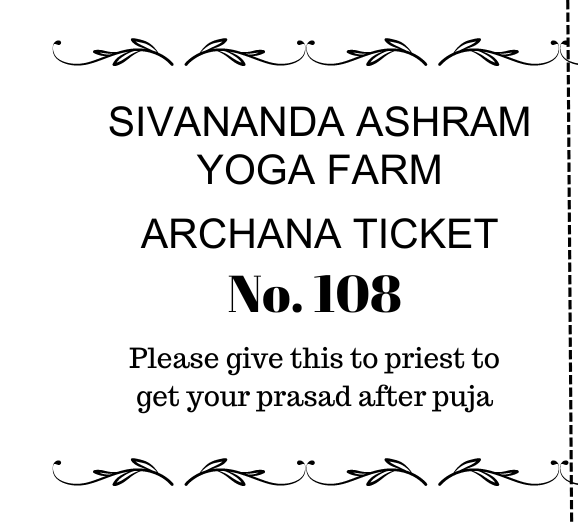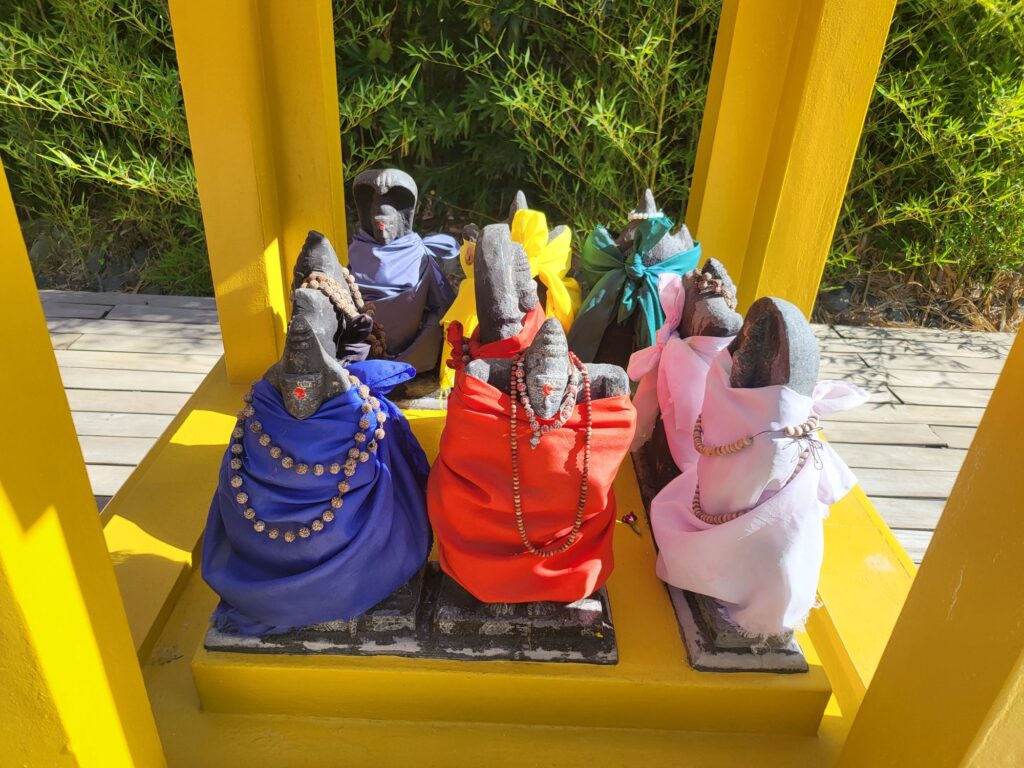Ashram Temples & Shrines
Ashram Temples & Shrines
SIVANANDA ASHRAM YOGA FARM
Swami Vishnudevananda established the Sivananda Ashram Yoga Farm in Grass Valley, California in 1971 after having the vision of Radha and Krishna dancing under the moonlight in the valley. For this reason he gave the ashram the nickname – Sivananda Vrindavan Yoga Farm.
The ashram has 10 temples and shrines. The first temple Swamiji initiated was the Durga temple in 1990 followed by the Siva temple in 1991.
Swami Sitaramananda, the current director, became director of the Yoga Farm in 1995 and installed the Krishna temple at that time.
The rest of the temples and shrines were all built during the following years.
Menu of Services
YOGA FARM TEMPLES & SHRINES
Puja (without abhishekam)
- $108.00 – Puja without abhishekam – 1 hour worship ceremony
Puja with abhishekam
- $200.00 – Puja with abhishekam – 2 hours worship ceremony – 16 offerings, includes milk and panchamrita. (Siva puja includes lingam abhishekam in Radha Krishan hall and visit to the Siva temple))
Homa
- $250.00 – Homa – 2 hours fire ceremony – Flowers, fruit prasad, dry fruit, ghee, banana, sweet cooked rice, samagri, sesame seeds
Other services
- $108.00 – Other services – Naming ceremony, Feeding ceremony, Prayers for deceased, Prayers for the sick
Ganesha Shrine at Ashram Entrance

The Ganesha shrine is at the main entrance to the ashram. The ashram, located in Grass Vally, CA, is about 1.5 hours from Sacramento. When you come to the ashram, you drive 1 mile down a dirt road and arrive to the ashram entrance parking lot. From the parking lot you walk in on the entrance path where you are greeted by Sri Ganesha’ji. Ganesha represents the removal of obstacles. Ganesha has the head of an elephant. The elephant is a very wise and sacred animal in the yogic tradition and in India. An elephant is very big and strong and can knock over a tree if it wishes but it can also be very subtle and pick up a blade of grass with its trunk. Elephants are all vegetarian yet they are very big and strong.
You can repeat Ganesha’s mantra – OM Gam Ganapatayai Namah – 9 times as you enter the ashram to receive the blessings of Ganesha. The current shrine of Ganesha is inspired by an East Asian look with the sloped roof and red paint. There are two stain glass yaantas on either side of Ganesha inside the shrine. Our resident priest from South India does daily arati to Ganesha to keep up the spiritual vibrations. From here you will walk down the curving entrance path to come to reception and check in for your stay at the ashram.
This particular Ganesha is carved from stone and comes from Vietnam. Vietnam was once a Hindu culture called Cham. You can see the very distinct look of this Ganesha.
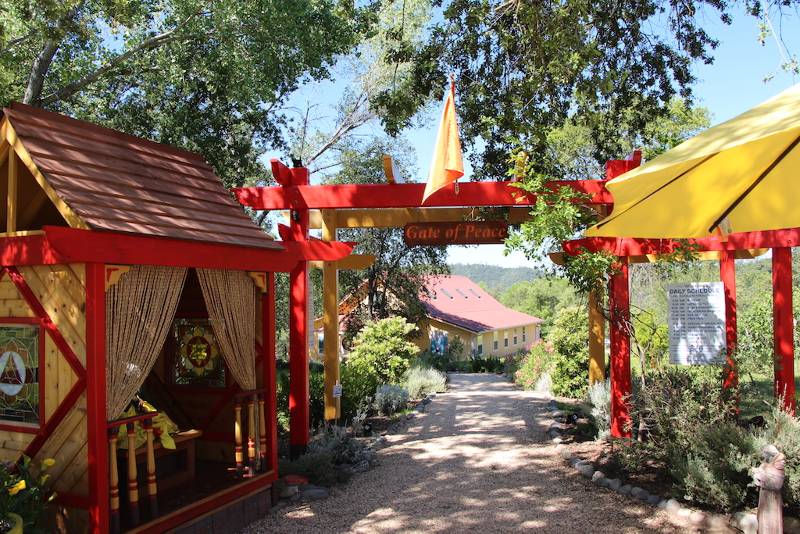
Main entrance to the ashram.
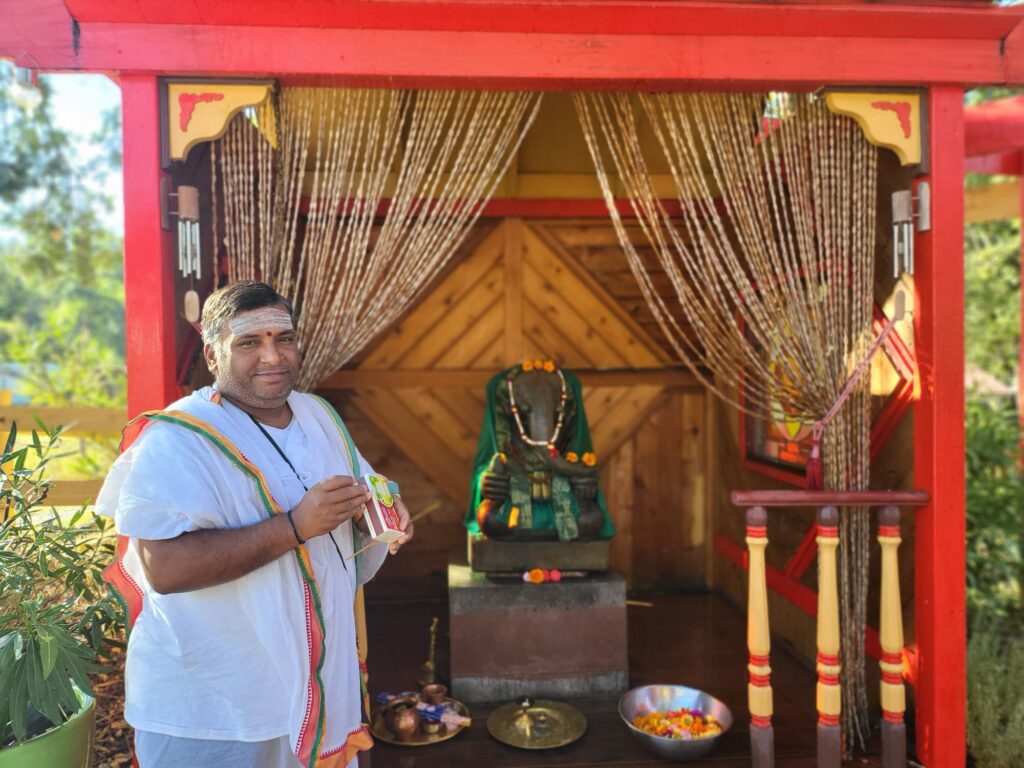
Our resident priest with Ganesh’ji
Moola Ganesha
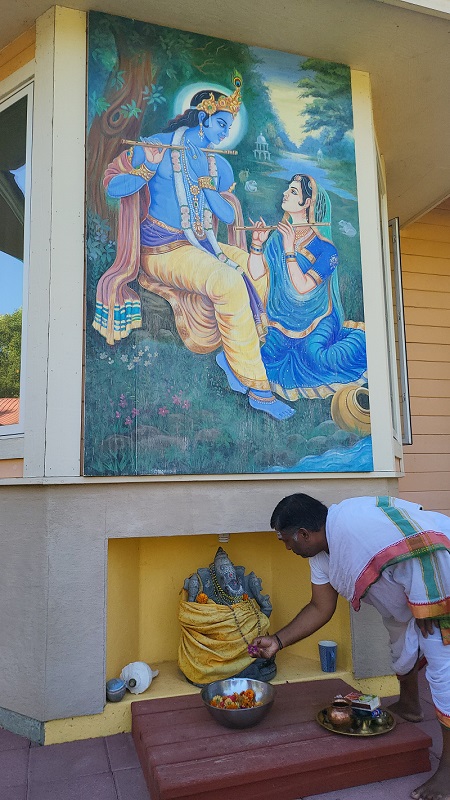
As you enter into the ashram and walk on the pathway to the dining hall and cabins, you will see outside the Radha Krishna hall a large paining of Krishna playing the flute. Underneath the photo is another Ganesha which is called the Moola Ganesha. Moola means the root or the base. This Ganesha was installed at the base of the Radha Krishna shrine in the main farm house.
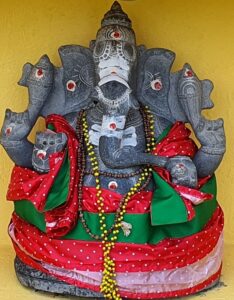
Ganehsa represents then energy of removing obstacles so we can climb higher on our spiritual path. Installing Sri Ganesha at the base of the Radha Krishna shrine helps to remove any difficulties on our journey so we can see the divine and experience clarity in our life. As you pass by, feel free to stop by and offer prostrations to Sri Ganesh ji and pray that obstacles on your path may be removed.
Hanuman Shrine
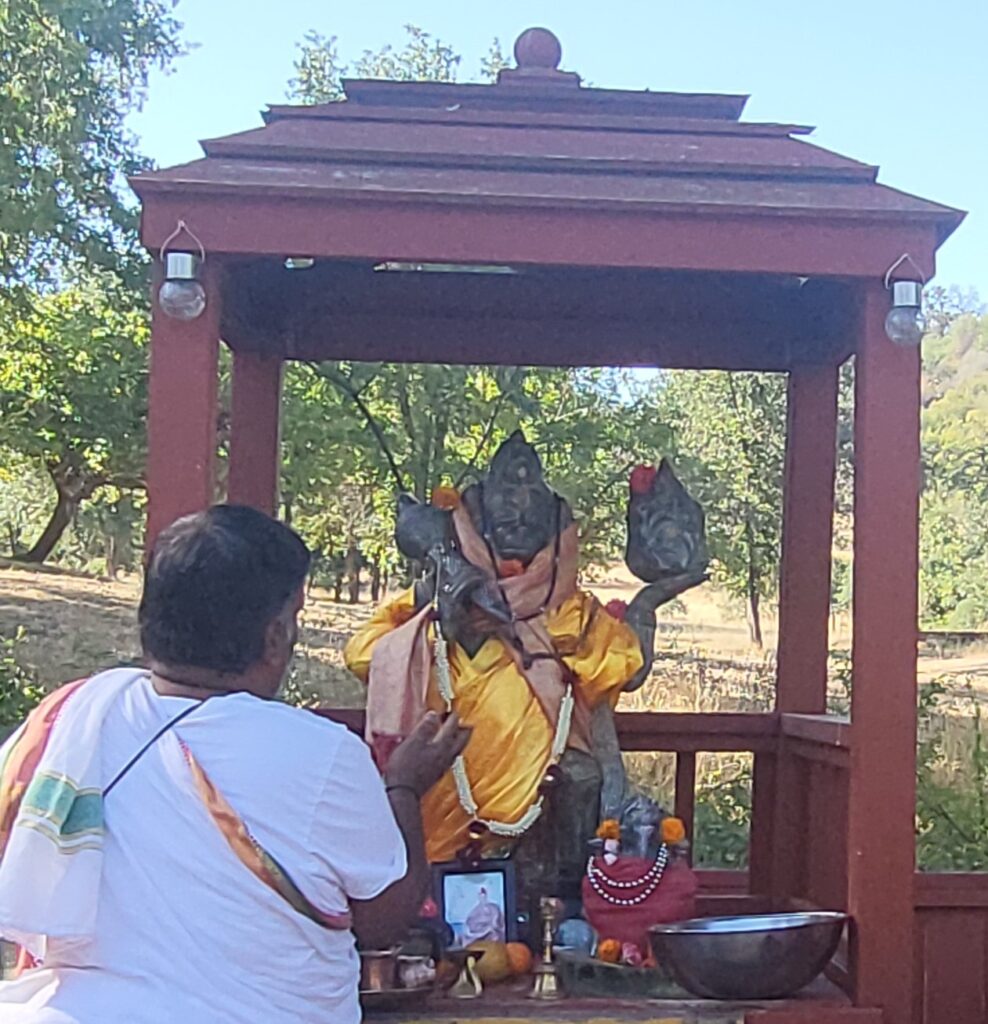
As you continue to walk along the main ashram pathway to the cabins, you will come across this shrine for Sri Hanuman. Hanuman is a devotee of Lord Rama and represents prana and strength. He is half monkey and half human. He is devoted to Lord Rama with one pointed focus and has all the siddhis or super natural powers or strengths. Here he is pictured holding the mountain which has a special herb that was needed to heal Rama’s brother Lakshmana who was hurt in battle in the epic story, the Ramayana..
The story of Hanuman comes from the great epic, Ramayana in which Hanuman led the monkey army from South India across the ocean to Lanka to save Sita who was captured by Ravana. Sita is the wife of Rama. This is a metaphor how we have lost our connection to our True Self and have to go on a journey to recover this connection.
When we pray to Hanuman we imbibe the powers that Hanuman possesses of strength and devotion. Hanuman is the best karma yogi and does whatever is needed to serve Rama in his righteous mission. Rama comes from the Solar dynasty is considered the perfect family man, father, son, husband, and friend.
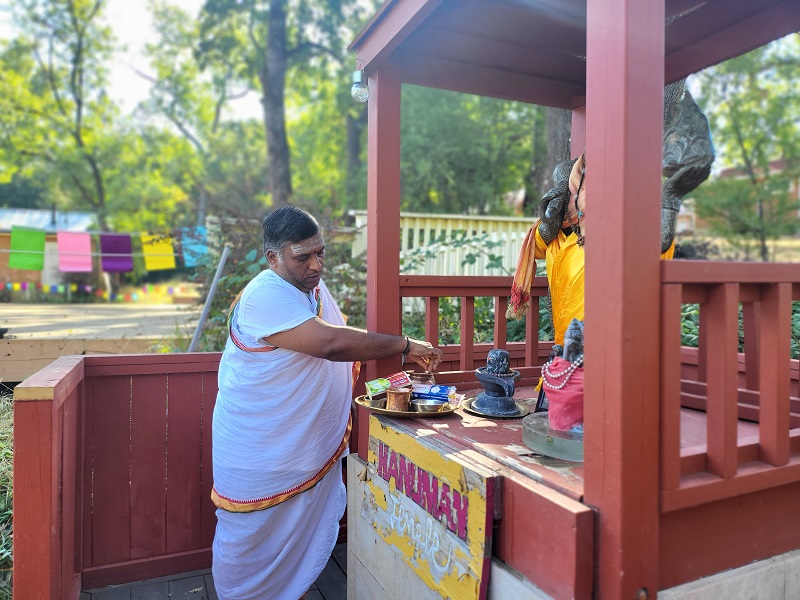
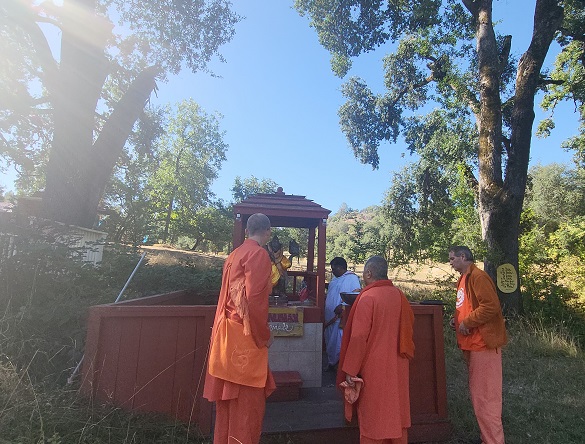
Krishna Temple
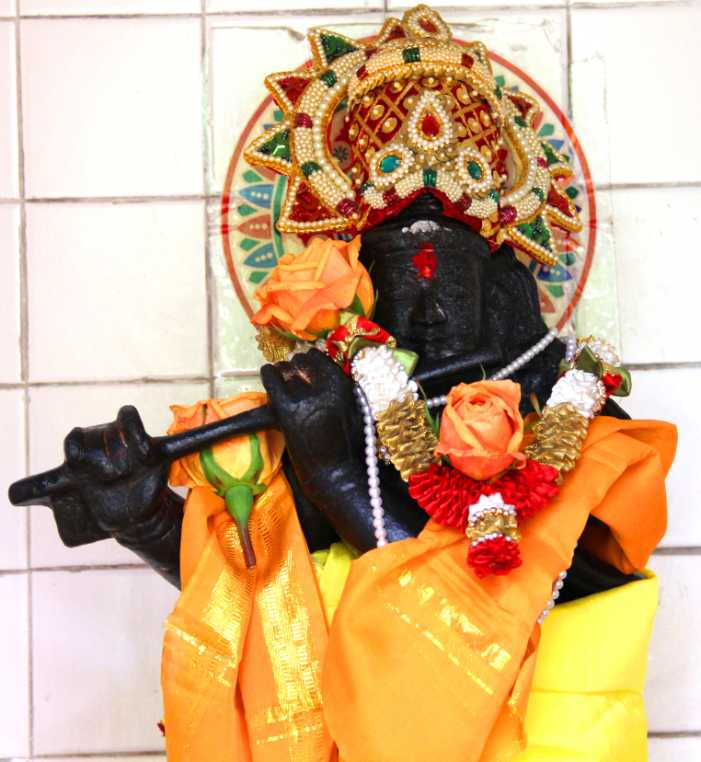
The Krishna temple was established in 1995 when Swami Sitaramananda took over directorship of the ashram. When the ashram was founded by Swami Vishnu, he had a vision of Krishna playing the flute in the moon light with the Gopis or devotees. Because of this, Swamiji wanted to build the Krishna temple to honor that vision.
When the Krishna temple was first installed there were a few miracles that took place to show that Krishna was happy. To install the deity, a puja was performed by a special Indian priest which went through the whole night and the following morning a male deer with antlers came by and ate the prasad from the puja. The animal of Krishna is a deer, mrigam. The vibration from the puja was so high, that the deer was able to overcome its animal instincts and come near to humans and not be afraid. We even have a picture of Swami Sita with her arm around this deer as they posed for a photo. The Krishna temple is installed in such a way that Krishna is looking directly at the entrance to the ashram and give blessings to all the guests that come for a visit.
The Krishna temple shrine is a classical South Indian temple design following Vastu principles. There are 2 painted pictures of Krishna on either side of the temple that show the pastimes of Sri Krishna.
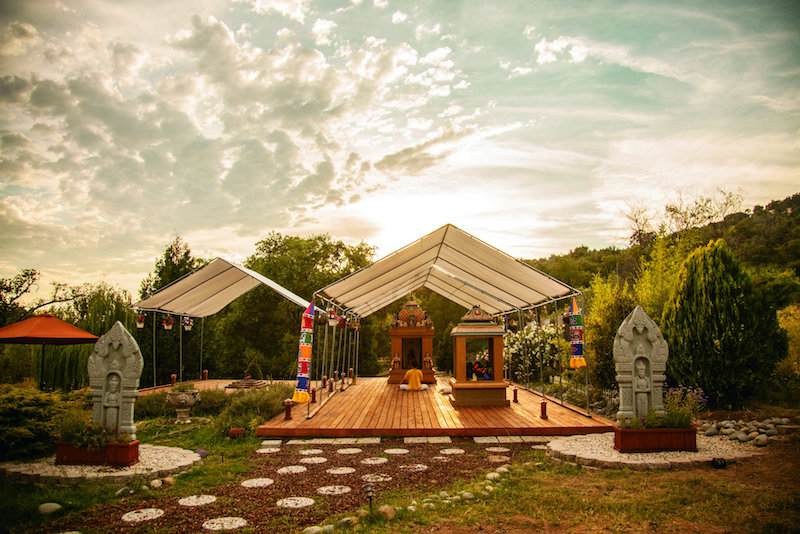
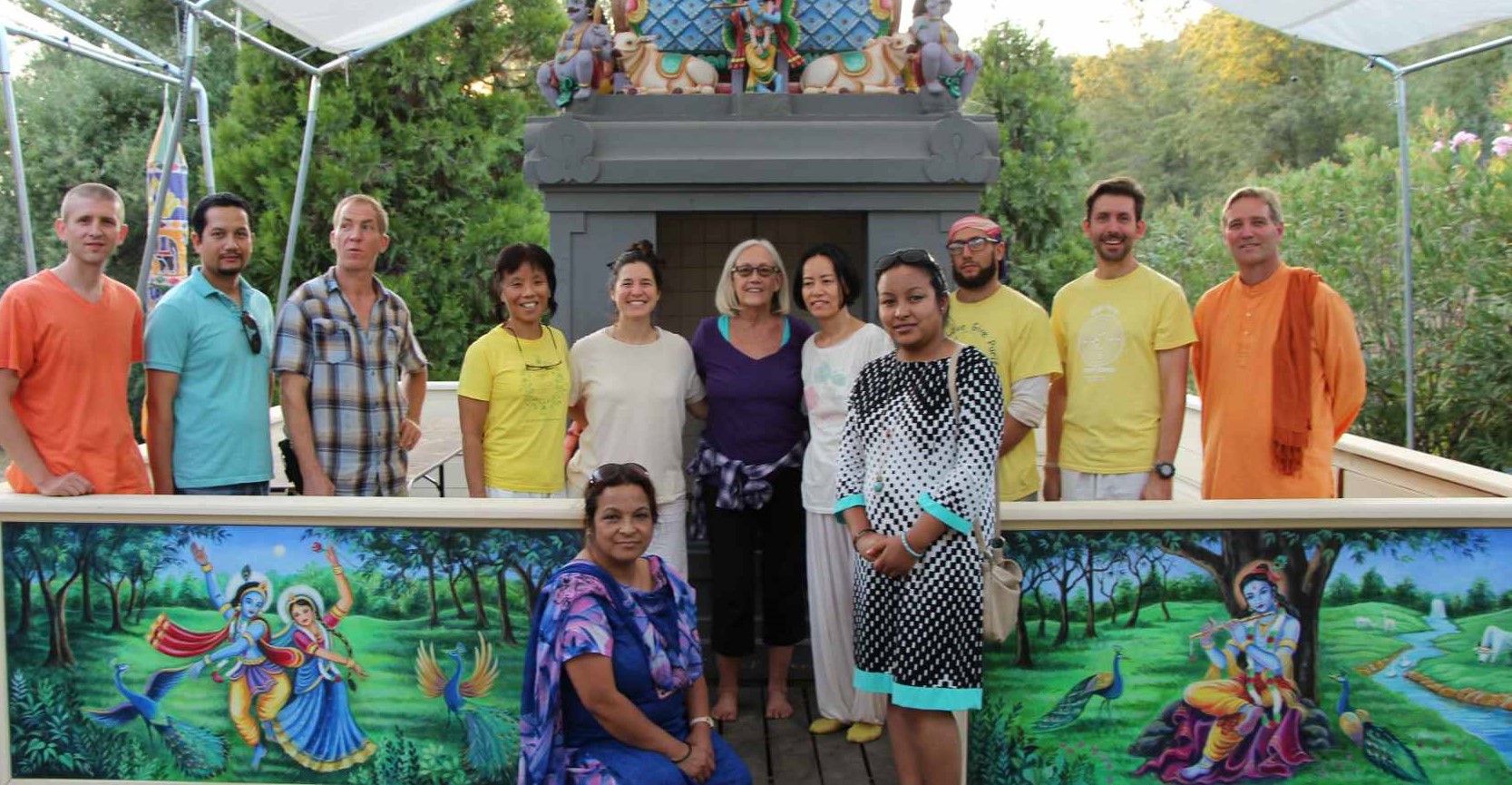
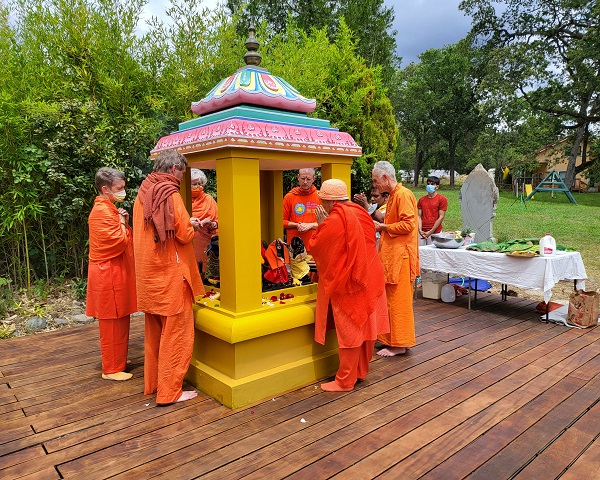
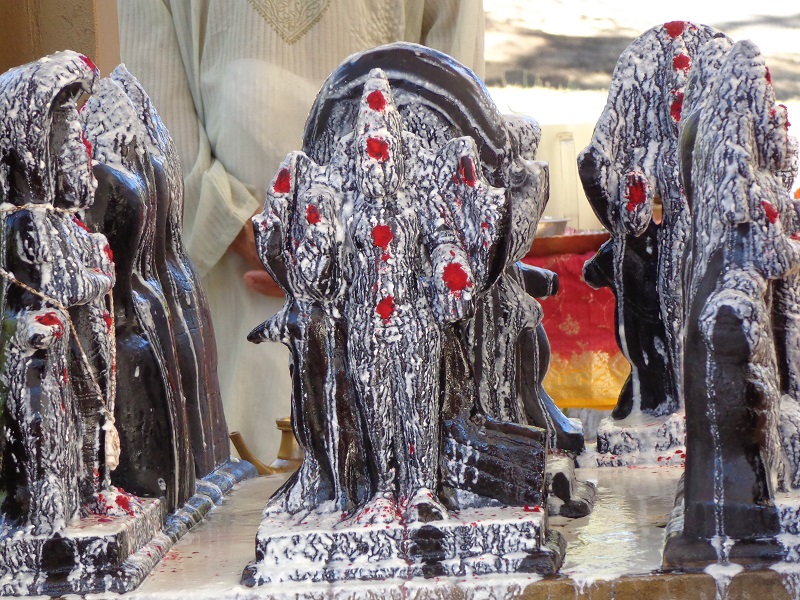
Radha Krishna in main house
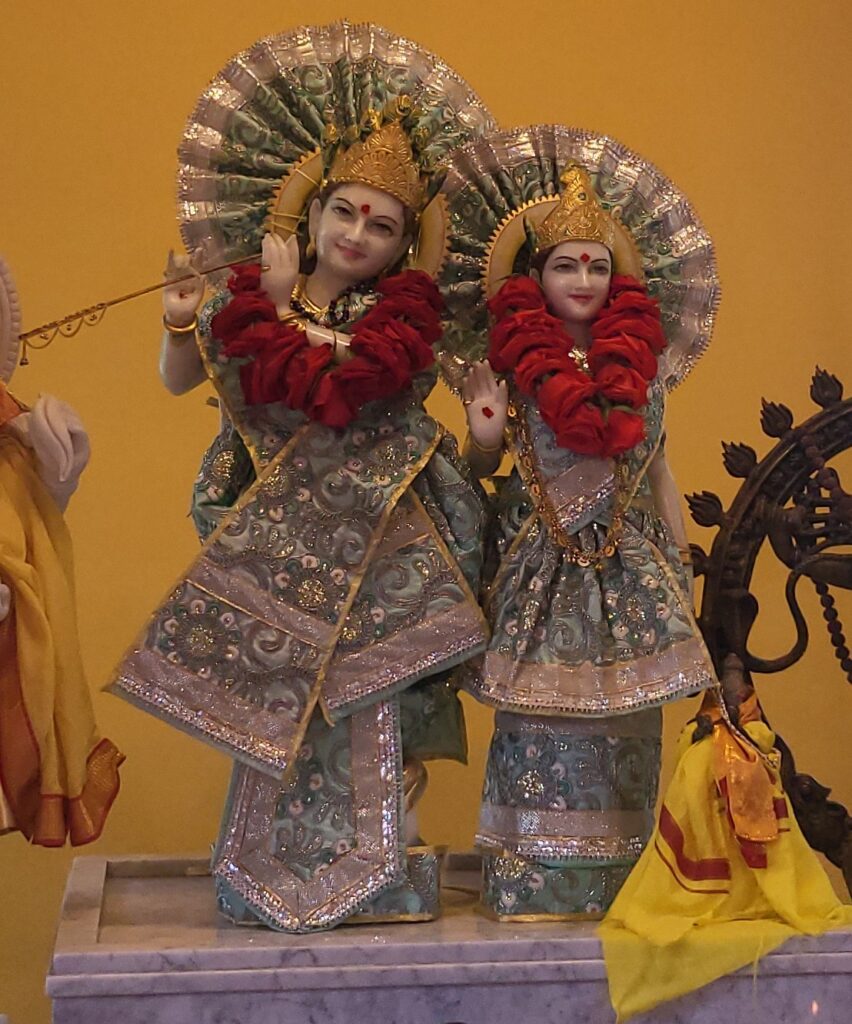
The Radha Krishna hall is in the main farm house at the ashram which we call the Vishnu house and it is the original building where all the programs took place, before the building of the large Yoga Hall. It has a very cosey feeling and the energy is quite strong inside. The main statues on the altar are that of Radha and Krishna. Krishna represents the energy of playfulness, happiness, and joy while Radha is Krishna’s main consort. She is the most devoted to Krishna and in fact sees no difference between Krishna and herself.
Krishna is also the teacher in the Bhagavad Gita and gives the wisdom teachings to Arjuna on the battlefield of life. Puja is performed regularly in this hall along with satsangs and meditation.
There is a beautiful mural painting on one wall of the hall which has pictures of many different teachers including Jesus and Buddha.
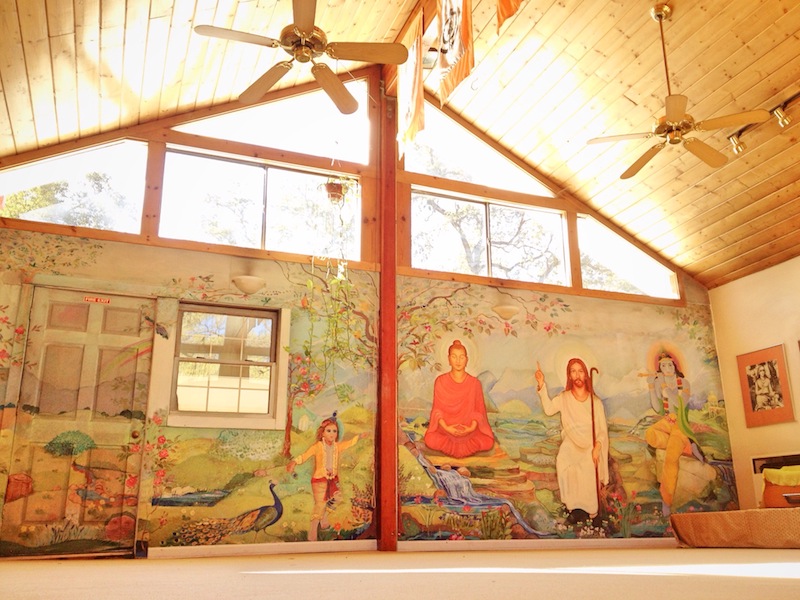
RK Hall Mural painting with Jesus, Buddha, Krishna, and Subramanya
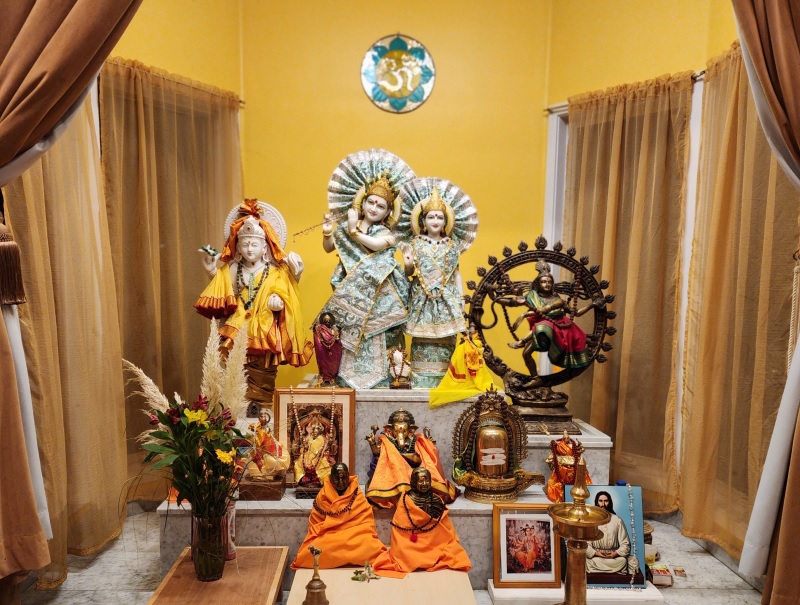
RK Hall main altar with Radha and Krishna. Also Lord Nataraj and Dhanwanthari.
Siva Temple
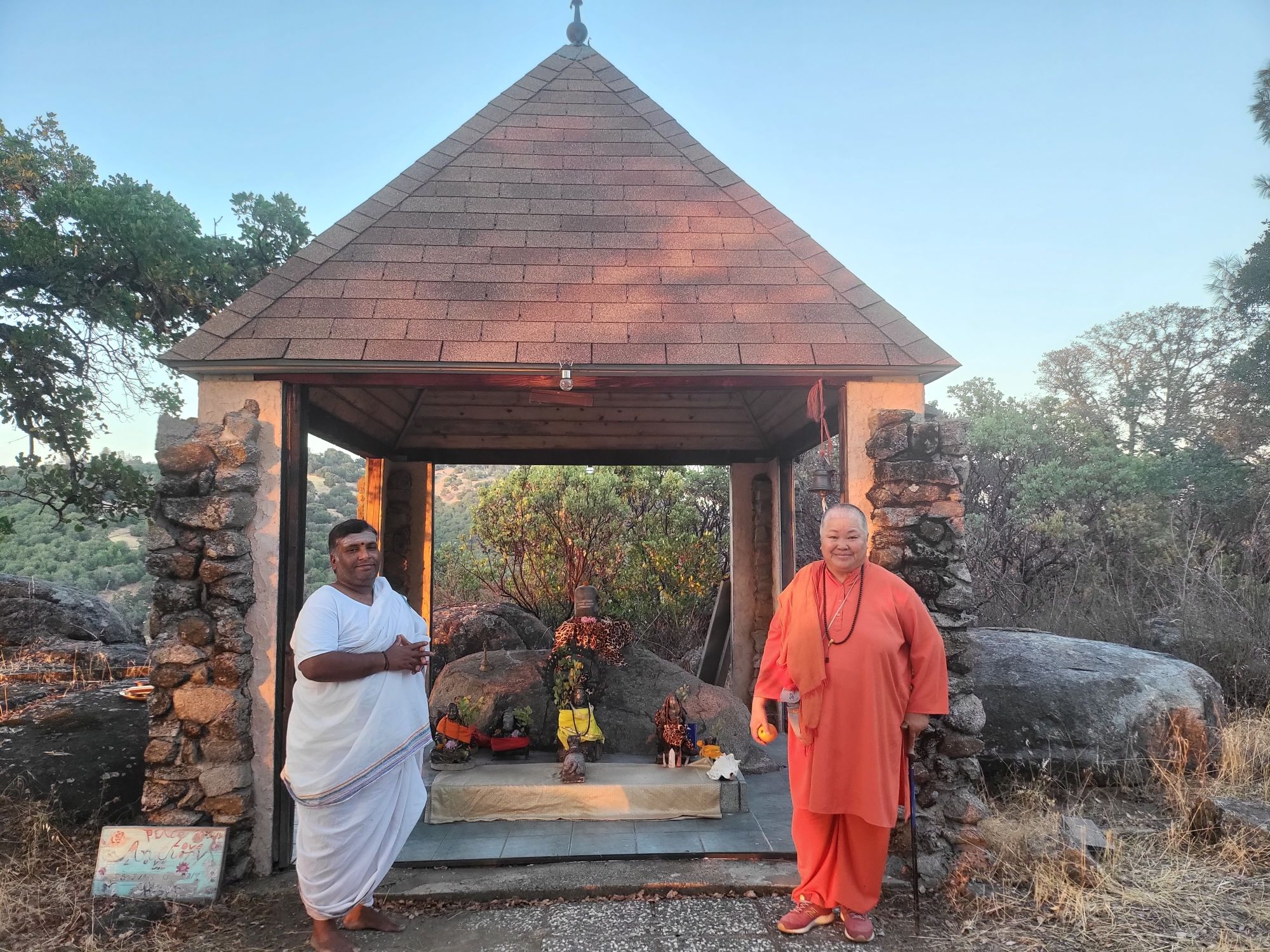
The Siva temple is located on the highest point of the ashram. There are 108 steps that take you to the top of the hill where the temple is located. Swami Vishnu chose the location of the Siva temple on his last visit to the ashram. He chose the rock where the Siva lingam is now installed. Siva represents the energy of discipline, detachment and meditation. Siva is the adi guru and masted all 84,000 yoga asana postures. If you would like to improve in your meditation and gain detachment, then offer your prostrations to Lord Siva.
Siva is represented by the Siva lingam which represents pure consciousness.
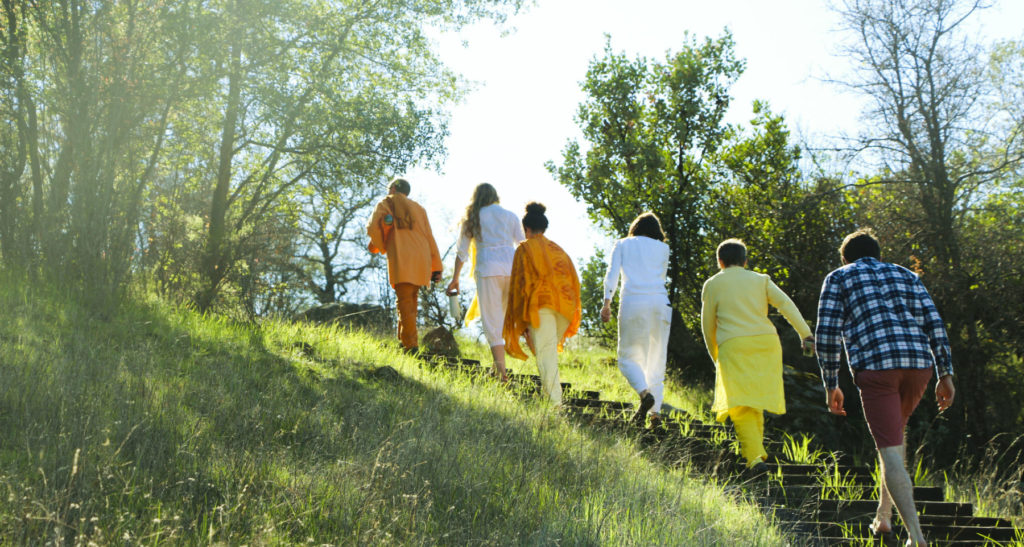
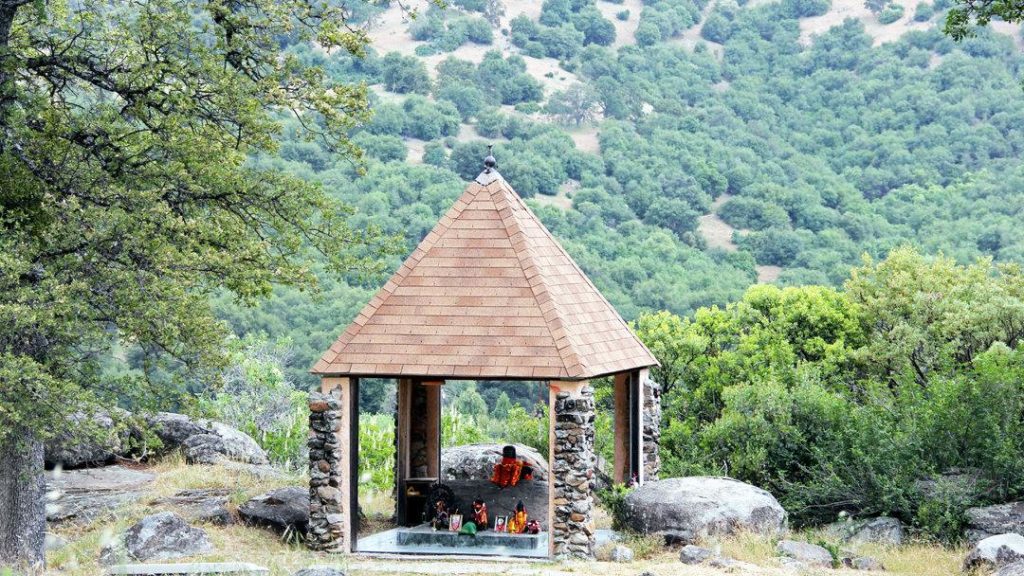
108 Steps Up to Siva Hill View from top of Siva Hill
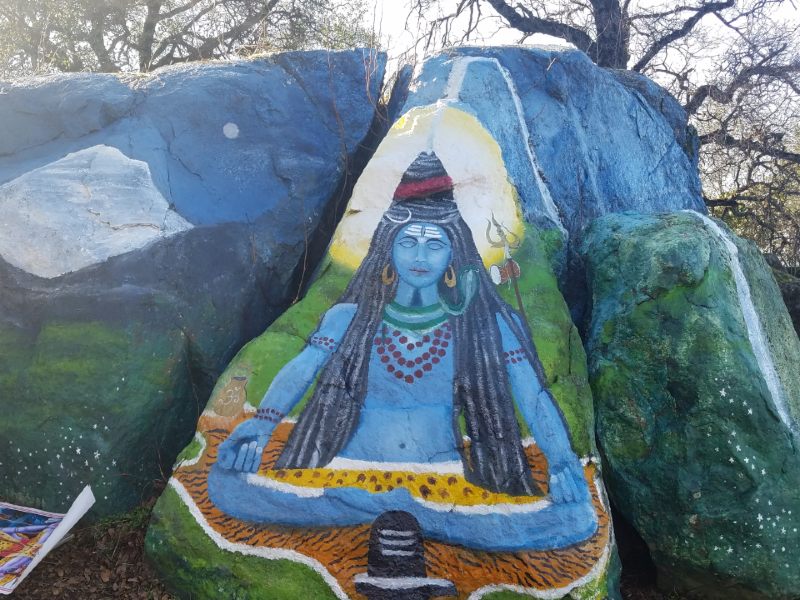
Painting on top of Siva Hill
Durga Temple
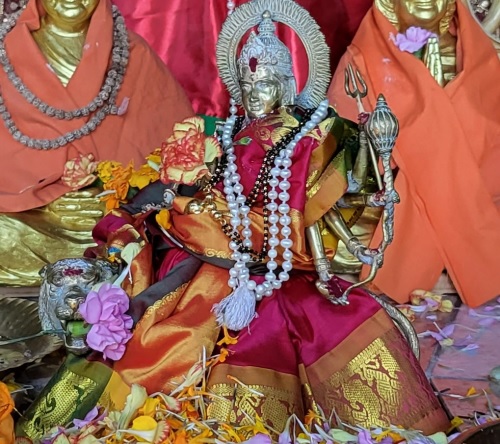
The Durga temple is located in the forest and is a 15 minute walk from the main ashram grounds. Durga is the divine mother and she hold all the weapons of all the gods in order to fight off the negativities in our life. Anyone experiencing fears or anxiety can pray to Mother Durga to remove their fears.
The Durga temple was installed in 1991 by Swami Vishnu. The main deity is the smaller brass statue. The larger marble one is also shown here. At the temple itself there is a copper tube which goes into the shrine and has gems installed to represent the 7 chakras. The highest of which is the Durga statue at the sahasrara where the worship is done. By praying to Mother Durga you can get answers to many of life’s questions.
Om Sri Durgayai Namah.

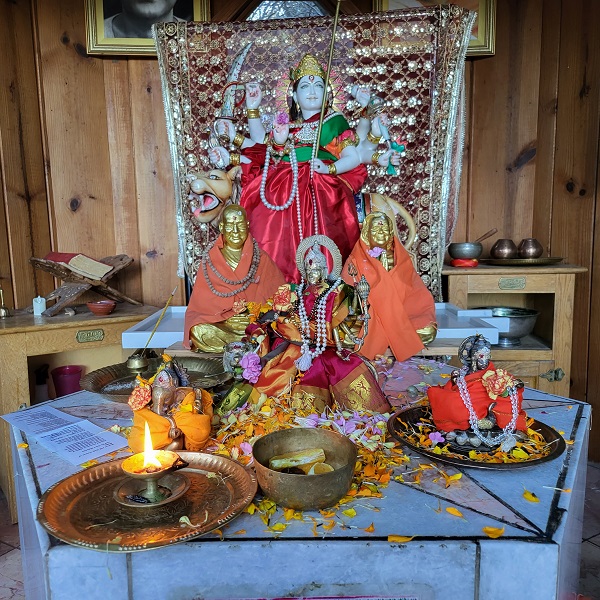
Daskshina Murti
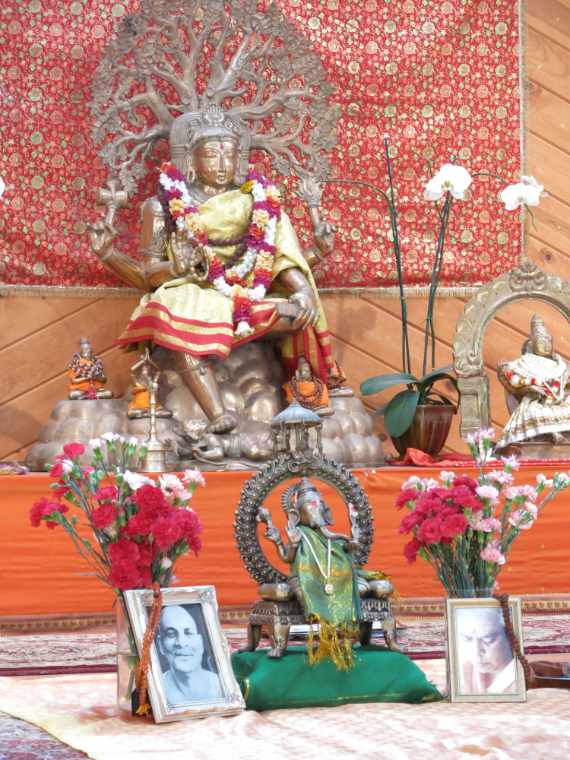
The Brahma Vidya Hall is the main Yoga Hall at the Yoga Farm where we offer satsangs, yoga classes, workshops, etc… It was built in 2006 and has a beautiful design with high ceilings, nice pictures, and yantras of Jupiter, Ganesha, and Sri Yantra.
The main deity in the Yoga Hall is Dakshina murti who is a youthful form of Siva sitting under the banyan tree. He teaches through Silence and has 4 main disciples that sit with him to learn the Highest Knowledge.
Sitting on the altar next to Dakshina Murti are Ganesha, Saraswati, Krishna, Durga, Patanjali, Adi Sankaracharya, and the Gurus along with Buddha and Jesus.
In the yoga tradition, we believe the forms are many but God is one. The paths are many but the Truth is one.
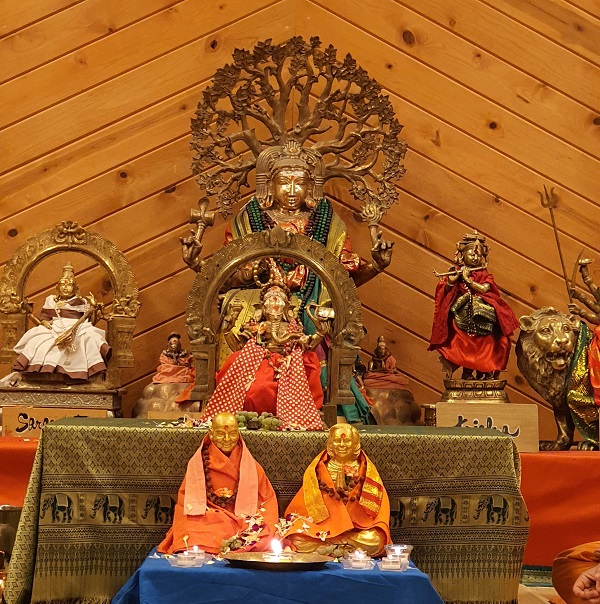
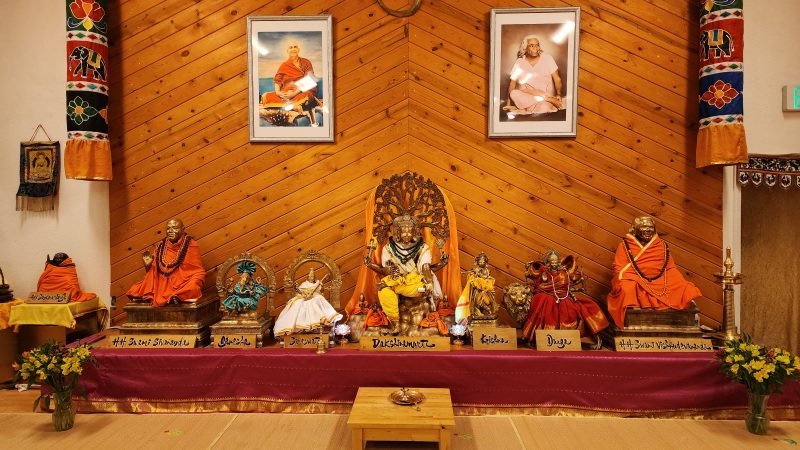
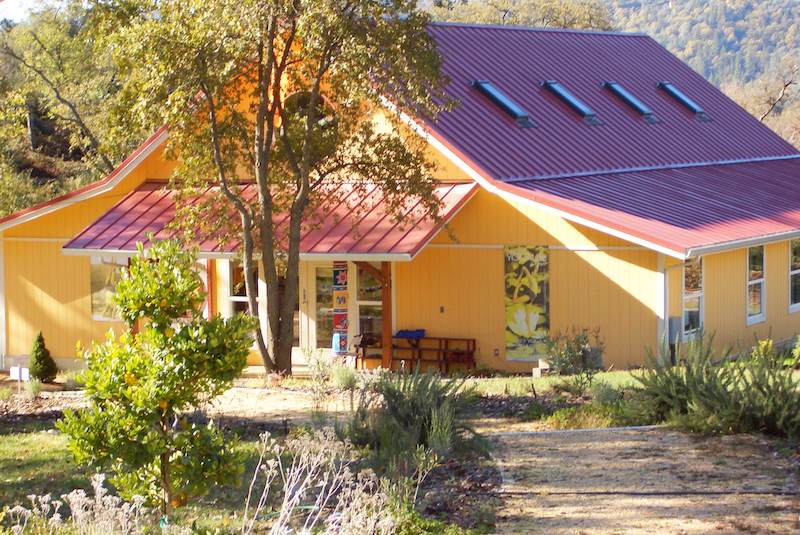
Nataraj Fountain

The Nataraj fountain is at the entrance to the reception. Nataraj is a dancing form of Siva. This particular Nataraj was sculpted in Vietnam and shipped to the Yoga Farm. The form of Nataraj here is more from the Cham tradition coming from Vietnam.
